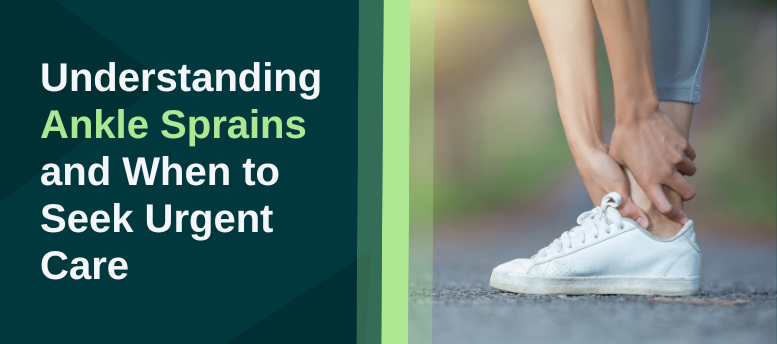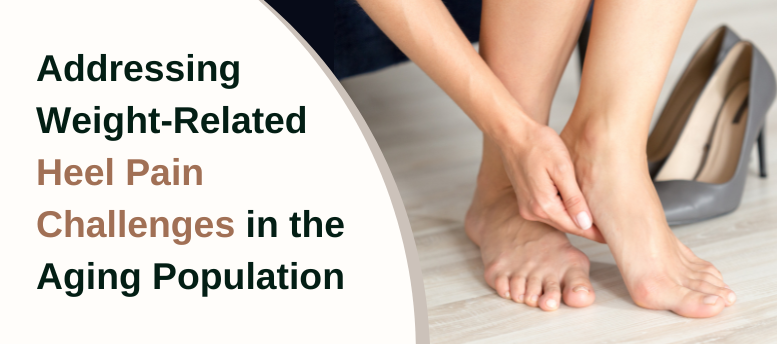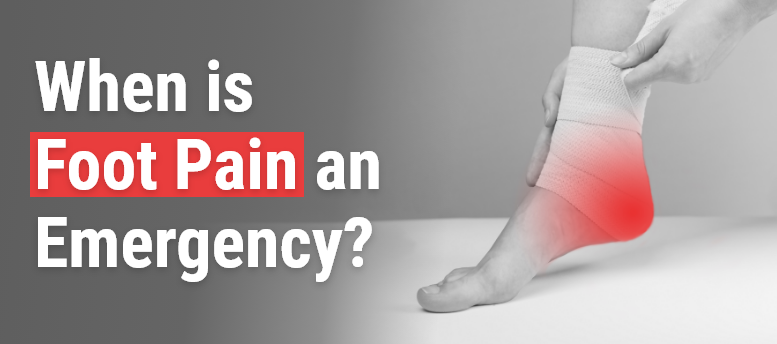Pickleball, which has become one of the most popular sports in the United States, was invented on Bainbridge Island in Washington state by former U.S. Representative Joel Prichard. Pickleball has taken the country by storm, becoming the nation’s fastest growing sport.
It has become so wildly popular due to its combination of other popular sports – ping-pong, tennis, and badminton. As with any other sport, it also involves certain risks. Some of the most common pickleball injuries involve your feet and ankles.
Have you or your friends recently jumped on the pickleball bandwagon? If so, you should be aware of the most common types of pickleball foot and ankle injuries and the best way to avoid them so you can enjoy playing pickleball injury and pain free.
The Sports and Fitness Industry Association reports that pickleball is the fastest-growing sport in the U.S., with an average growth rate of 11.5% per year over the past five years and over 4.8 million players nationwide. While the largest demographic of players fall into the 18-34 age range, there is also a significant number of older players due to the perception that the sport is slower and easier on the body than tennis.
However, despite requiring less running due to its smaller courts, pickleball can still lead to foot and ankle injuries. A 2018 study found that the annual number of senior pickleball injuries was equal to senior tennis injuries. This is due to the repetitive pounding on the hard court, which can cause Achilles tendonitis and heel pain, as well as the rapid side-to-side movements and quick changes in direction, which can lead to ankle sprains and other lower extremity injuries.
Let’s take a look at the major foot and ankle injuries that can occur while playing pickleball, their treatments, and methods of prevention.
![]() Acute Injuries
Acute Injuries
Injuries in Pickleball can be sudden or acute, such as when you twist and sprain your ankle or fall after a sudden turn or pivot, requiring foot and ankle urgent care.
![]() Ankle Sprains
Ankle Sprains
One of the most common acute injuries in pickleball is the ankle sprain. The movements required to play the sport often lead to this type of injury. Symptoms of an ankle sprain include sudden pain and difficulty bearing weight, as well as swelling, pain, and bruising.
It’s crucial to seek prompt treatment for ankle sprains to prevent further damage or chronic ankle pain. Initially, injured players should apply RICE principles: rest, ice, compression, and elevation to reduce swelling, inflammation, and pain. An podiatrist should be consulted to obtain an X-ray or MRI and determine if there is extensive damage. Treatment options may include wearing a walking boot, using crutches if non-weight bearing, and physical therapy to increase range of motion and build strength. Visit urgent care for feet centers for a professional diagnosis and information on treatments for a sprained ankle.
![]() Fractures
Fractures
Ankle fractures are also a common pickleball injury, and treated similarly to an ankle sprain. Imaging will be used to determine whether any ligaments have been torn and the severity of the fracture.
![]() Achilles Tendon Rupture
Achilles Tendon Rupture
When the tendon is stretched beyond its normal size, an Achilles tendon rupture can occur. Pickleball requires players to move quickly and twist their feet and ankles in order to hit the ball, sometimes causing this tendon to stretch beyond its capacity. For those who only play occasionally, especially older players, this risk is increased. Certain medications can weaken the tendon, like some antibiotics and steroids, and make it more likely to rupture.
![]() Chronic Injuries
Chronic Injuries
Chronic injuries differ from acute ones in that they occur overtime as a result of overusing the feet and ankles, improper shoes, issues with foot mechanics, hard surfaces, and other bodily structures. You might feel A-OK today, then a slightly painful twinge tomorrow, and sharp pain the next day. This is a typical occurrence for conditions like Achilles tendonitis and plantar fasciitis.
![]() Plantar Fasciitis
Plantar Fasciitis
Heel pain, or plantar fasciitis, is one of the most commonly diagnosed conditions in the feet of people who play sports with high levels of foot impact, including pickleball. Being overweight, improper footwear, poor foot mechanics, and tight calf muscles are also contributing factors of plantar fasciitis. Older pickleball players are at a higher risk of plantar fasciitis than their younger counterparts.
The plantar fascia is the area of the foot affected by plantar fasciitis. This is the area of the foot that runs from the heel across the bottom of the foot to the base of the toes. The plantar fascia becomes inflamed, causing pain across the bottom of the heel and sometimes the arch of the foot, when it is stretched beyond its capacity. One of the major symptoms of plantar fasciitis is pain with the first steps out of bed in the morning that gradually decreases over the course of the day.
Treatment of plantar fasciitis must be complete in scope in order to be effective because there are so many factors involved in the development of this condition. If you are experiencing heel pain, you should refrain from playing pickleball until you see a podiatrist. Resting is a good start, but most people will need the help of a podiatrist to reduce inflammation, and may need to have their shoes assessed, do stretching exercises, be fitted for custom orthotics, and may even require physical therapy.
![]() Achilles Tendonitis
Achilles Tendonitis
A chronic ankle condition that results from repetitive stress to the Achilles tendon is known as Achilles tendonitis. Many of the same factors that cause plantar fasciitis are also the cause of Achilles tendonitis. Taking antibiotics or having high blood pressure can also increase the risk of this condition.
Achilles tendonitis often starts with mild pain at the back of the heel that spreads to just below the calf muscle, and may gradually get worse over time. Urgent care for feet treatment for Achilles tendonitis is almost identical to that of plantar fasciitis. Neglecting to get proper treatment for Achilles tendonitis can lead to Achilles tendonosis, a degenerative disorder that may require injections or even surgery to properly heal.
![]() Stress fracture
Stress fracture
Repetitive sports, like pickleball, can cause small cracks in the foot bone, known as stress fractures. The same factors that can lead to plantar fasciitis can also impact a pickleball player’s likelihood of developing a stress fracture in their feet. Women who are underweight or post menopausal are at a higher risk of developing stress fractures, as well as players who do not gradually build up to playing pickleball regularly.
The typical treatment of a stress fracture is usually rest and immobilization for up to six weeks.
Symptoms of a stress fracture include:
- Pain that suddenly starts in the ankle or foot but is relieved by rest.
- Bruising, pain, redness, or swelling at the top of the foot or on the ankle.
How to Pickleball Players Can Prevent Foot and Ankle Injuries
As with any sport, there is no way to guarantee that an injury will never happen, but there are ways to reduce the likelihood of an injury occurring.
- Buy the right shoes.
Just grabbing any old gym shoe won’t do. You need to take into consideration the type of surface you will be playing on, and whether that surface is indoors or out.For indoor play, badminton or racquetball shoes are best. For outdoor play, tennis shoes are the best option. The key to choosing the right shoe is to ensure it keeps your foot and ankle stable while you are running or twisting around the court. - Buy the right socks.
As with any athletic sock, you need socks that wick sweat and moisture away from your skin to prevent blistering. - Work your way into playing slowly.
It’s important to slowly build tolerance for playing pickleball in the same way you would with any other sport. Try starting with 30 minutes of playtime and increase by no more than 10% a week. It’s important that you listen to your body, so if you start to feel tired or experience any pain after 15 minutes, it’s time to stop and rest. This is especially important for players who aren’t already fairly physically active. - Stretching
Stretching your calf muscles before and after playing pickleball is critical to prevent the flare up of heel pain.
Conclusion
Pickleball has become a favorite sport in the US for good reason. By combining some of the most enjoyed activities in the country, it offers a lower impact competitive activity for people of all ages. That doesn’t mean, however, that it doesn’t come with risks.
When foot and ankle injuries do occur, Urgent Care For Feet is here to help. If you need urgent care for foot and ankle injuries or fractured foot treatment, visit our podiatry urgent care for prompt and expert care from experienced podiatrists. Urgent Care For Feet offers comprehensive diagnosis and treatment options to get you back on your feet in no time. Contact us today for an appointment.




